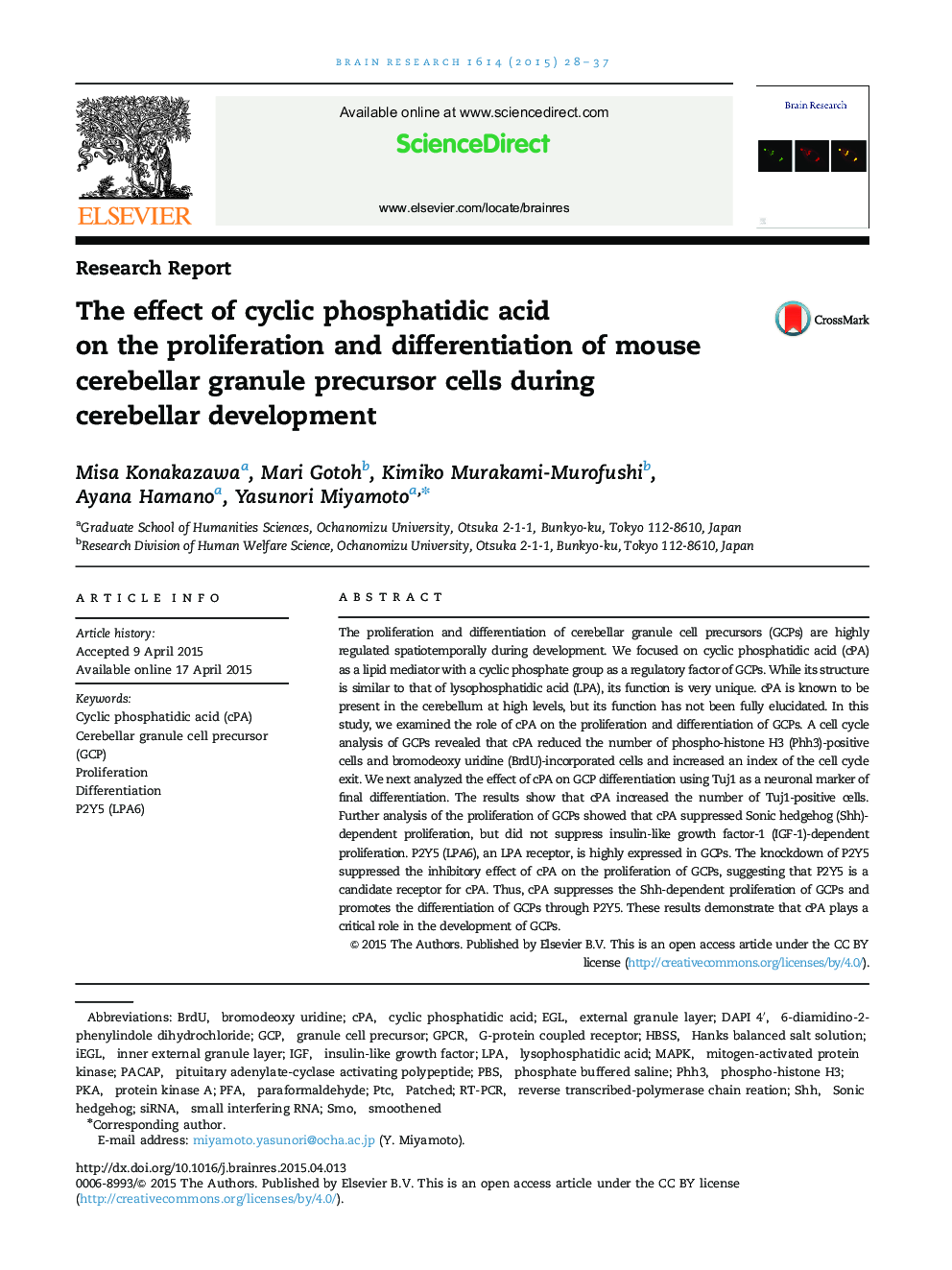| کد مقاله | کد نشریه | سال انتشار | مقاله انگلیسی | نسخه تمام متن |
|---|---|---|---|---|
| 6263021 | 1613825 | 2015 | 10 صفحه PDF | دانلود رایگان |
- cPA promotes the final differentiation of GCPs into granule cells.
- cPA suppresses the Shh-dependent proliferation of GCPs.
- P2Y5 is responsible for the inhibitory growth effect on GCPs, acting as a receptor for cPA.
The proliferation and differentiation of cerebellar granule cell precursors (GCPs) are highly regulated spatiotemporally during development. We focused on cyclic phosphatidic acid (cPA) as a lipid mediator with a cyclic phosphate group as a regulatory factor of GCPs. While its structure is similar to that of lysophosphatidic acid (LPA), its function is very unique. cPA is known to be present in the cerebellum at high levels, but its function has not been fully elucidated. In this study, we examined the role of cPA on the proliferation and differentiation of GCPs. A cell cycle analysis of GCPs revealed that cPA reduced the number of phospho-histone H3 (Phh3)-positive cells and bromodeoxy uridine (BrdU)-incorporated cells and increased an index of the cell cycle exit. We next analyzed the effect of cPA on GCP differentiation using Tuj1 as a neuronal marker of final differentiation. The results show that cPA increased the number of Tuj1-positive cells. Further analysis of the proliferation of GCPs showed that cPA suppressed Sonic hedgehog (Shh)-dependent proliferation, but did not suppress insulin-like growth factor-1 (IGF-1)-dependent proliferation. P2Y5 (LPA6), an LPA receptor, is highly expressed in GCPs. The knockdown of P2Y5 suppressed the inhibitory effect of cPA on the proliferation of GCPs, suggesting that P2Y5 is a candidate receptor for cPA. Thus, cPA suppresses the Shh-dependent proliferation of GCPs and promotes the differentiation of GCPs through P2Y5. These results demonstrate that cPA plays a critical role in the development of GCPs.
Journal: Brain Research - Volume 1614, 21 July 2015, Pages 28-37
